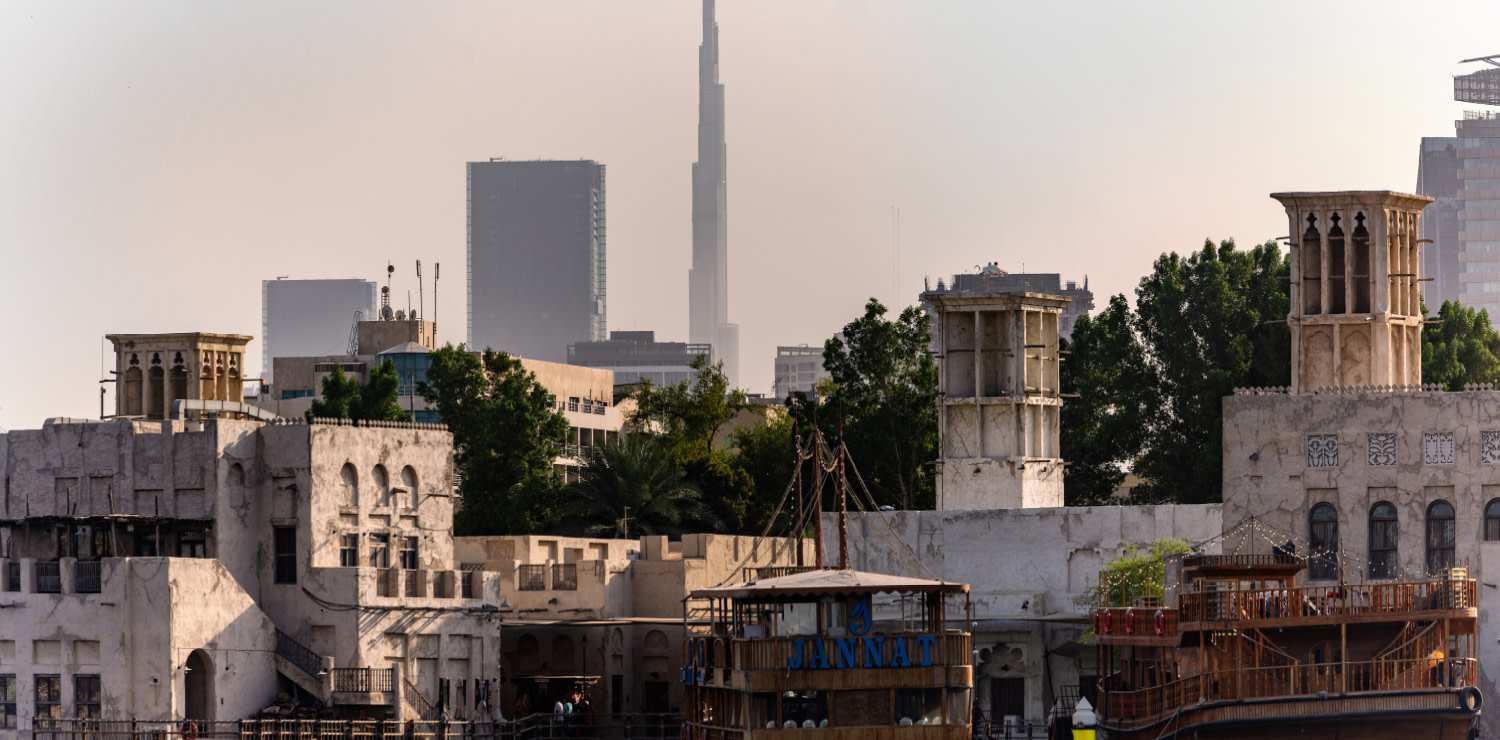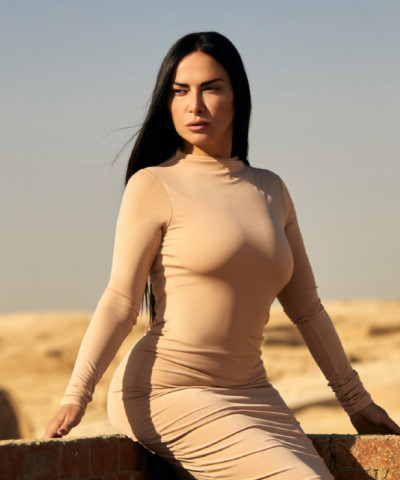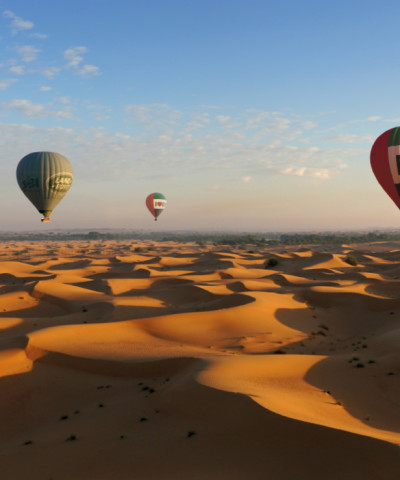What to see and do in the historic Deira district
Let's discover a neighbourhood teeming with character, centuries-old history and spectacular souks
Black ebony pepper, golden turmeric powder, rosebuds, cardamom, and flower tea. The oriental treasures of Dubai harken back to a time when spices represented precious commodities along the Silk Road, now housed in the Souks of Deira.
The area, one of the oldest in the city, is developed along the famous Creek and thrived thanks to trade, whose spirit is still alive and vibrant. In fact, ancient maps reveal commercial flows between Dubai and other countries in the region at the time when the Baniyas tribe dominated the spice route junction.
A time when merchandise, including stones and fragrances, were used in Cleopatra’s baths and at the court of Alexander the Great. Today these products enhance the culinary specialties of Asia, Africa, the Middle East, and Europe and perfume our homes. Inside the many shops that crowd the maze of the Souk’s streets, among the multitude of spices and aromas, there has always been one more precious than the others: saffron. “Better than buying gold!” shouts the vendor, holding a crimson-red pinch of it in his hands, addressing potential buyers.
 Not far from the tangled Spice Souk is the Gold Souk, where bracelets and ornaments of all kinds illuminate the shop windows
Not far from the tangled Spice Souk is the Gold Souk, where bracelets and ornaments of all kinds illuminate the shop windowsBy keeping to navigate the Deira district, not far from the tangled Spice Souk is the Gold Souk, where bracelets, necklaces, and ornaments of all kinds illuminate the shop windows and offer an incredible spectacle of luxury. Here haggling is a must and patience is key. During the negotiation, one will have the chance of knowing more than just the price as bargaining is a game of giving and taking, a social experience, and a way to better understand the culture. However, the Spices and Gold markets are not the only ones to color the streets of Deira. With a typical boat, the dhow, and for the cost of a dirham, it is possible to cross the river and reach the textile Souk. Arabian silks and Indian cotton enliven the alleys, and wonderful abayas attract the visitor’s attention. Strolling through the textile souk, it is not uncommon to find oneself in conversation with producers and tailors who are always eager to share the meticulous craftsmanship behind high-quality fabrics.
In the late afternoon then, this area suddenly fills up as Hindus hurry to the Shiva temple, carrying baskets of flowers, whose scent pervades the entire Souk.
 In the late afternoon, this area suddenly fills up as Hindus hurry to the Shiva temple, carrying baskets of flowers, whose scent pervades the entire Souk
In the late afternoon, this area suddenly fills up as Hindus hurry to the Shiva temple, carrying baskets of flowers, whose scent pervades the entire SoukJust a ten-minute walk from the textile market is the area of Al Fahidi, once a picturesque village on the banks of the Creek, now no longer inhabited but entirely restored. Its narrow winding streets host traditional Emirati architecture of stone and sandalwood. The wind towers that once channeled the air currents into the homes to cool them represent the uniqueness of this place that leads into the past. The journey into Dubai’s history continues through the doors of the Arabian Tea House, one of the must-visit culinary destinations in Deira and a true institution in Dubai. In its courtyard, on a floor of white pebbles, among turquoise benches and olive trees, one can savor the delights of Levantine cuisine immersed in the Mediterranean vibes. Here, Greek, Turkish, and Middle Eastern influences come together and create an unforgettable atmosphere.
 Arabian Tea House
Arabian Tea HouseEqually representative and iconic of the Deira district is the Fish Market, born in 1958 and later modernized while preserving its traditional charm. The variety of fish, fruits, and vegetables is extraordinary, and visitors can choose from an assortment of lobster, kingfish, and pomfret and have it cooked at Paluta or Yahya Seafood Restaurant. Moreover, adding that touch of “home” to the vibrant and ethnic Deira neighborhood is a little coffee shop overlooking the creek and very popular, Mazmi Cafe, owned by an Italian-Emirati couple and a place where Italian cuisine meets Arabian flavors.
 fish Market
fish MarketOverall, the culinary scene in the Deira area is quite diverse. The air is filled with the enticing aroma of the renowned Indian bread, Chapati, wafting through the streets, along with the sweet fragrance of freshly baked Kunafa, and the spicy scent of cumin. While in Deira, it is highly recommended to savor the exceptionally fresh dates, often coated in chocolate with almond fillings. Another absolute delight awaits at Geewin Cafe, where you can indulge in camel milk ice cream. By continuing to explore the ancient splendors and the culinary delights of the area, a visit to the Women’s Museum at Bait Al Banat is certainly a must. The museum paints a vivid picture of Emirati women over the years. Visitors will discover their incredible contributions to society, history, and the artistic works of the local culture.
 Just a ten-minute walk from the textile market is the area of Al Fahidi, once a picturesque village on the banks of the Creek, now no longer inhabited but entirely restored
Just a ten-minute walk from the textile market is the area of Al Fahidi, once a picturesque village on the banks of the Creek, now no longer inhabited but entirely restoredBut the discovery of Dubai’s past does not end here. In fact, Deira also preserves traces of a more recent past. In the 1960s of the 20th century, while the economy still primarily relied on fishing, pearls, and spice trade, the leaders of the Emirates embarked on an ambitious path of oil exploration.The first oil extraction opened up new and promising business opportunities, irreversibly altering the course of the history of the Country.
 A walk through the old quarter of Al Seef, studded with wind towers, sandstone buildings, fascinating sikkas and alleys gives you a privileged insight into ancient Dubai life
A walk through the old quarter of Al Seef, studded with wind towers, sandstone buildings, fascinating sikkas and alleys gives you a privileged insight into ancient Dubai lifeThe construction of the Deira Clocktower was dedicated to commemorating this significant historical event for the nation. Today, it stands as a symbol of the country’s economic revolution and an example of exceptional architecture. If it is true that the Deira area is rich in must-visit places, it is equally true that its beauty lies in its continuous comings and goings, in the slow navigation of the dhow crossing the river, and in the charm of the past that permeates this neighborhood overlooking modernity.












